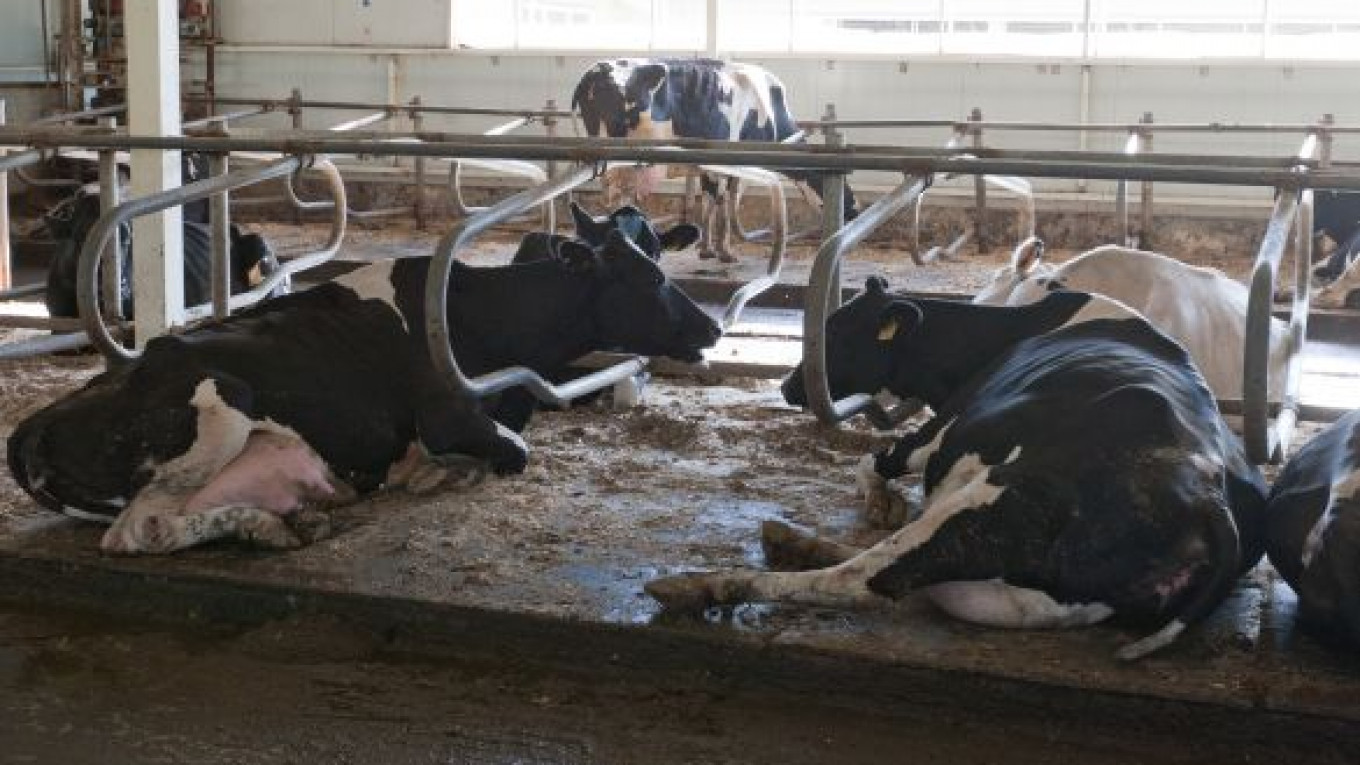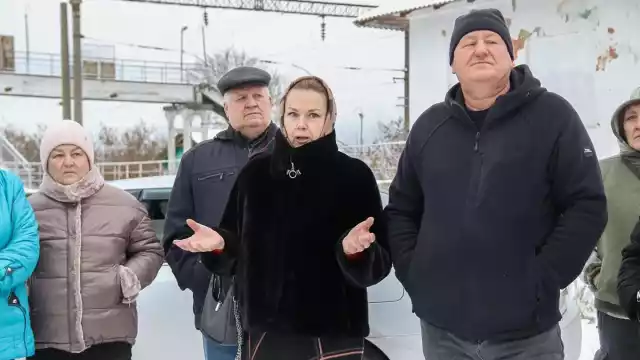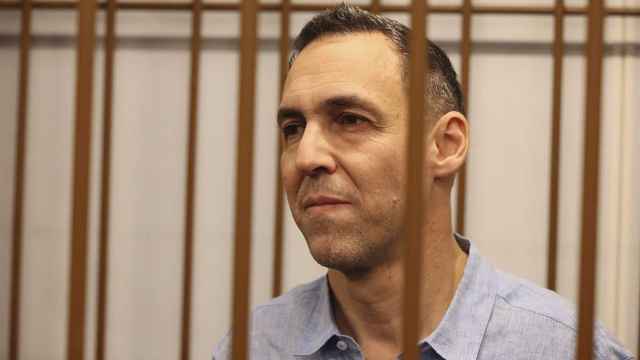Anthony Stidham, a 48-year-old third-generation rancher from Oklahoma, is at the forefront of President Vladimir Putin’s plan to cut Russia’s $3 billion annual bill as the world’s biggest beef importer.
At the country’s largest beef farm, about 400 kilometers southwest of Moscow, Stidham is passing on cattle-rearing skills to locals in a drive for self-sufficiency that’s already involved shipping in about 60,000 Aberdeen Angus cattle from the United States and Australia.
With incomes rising and beef sales set to increase, Russia has been cutting import quotas to revive a cattle-breeding tradition that was decimated under the rule of dictator Josef Stalin. Putin wants the country to meet 85 percent of its meat and poultry needs by 2020, threatening to curtail sales by Tyson Foods of Springdale, Arkansas, and Brasil Foods.
“There’s no place in the U.S., Australia or anywhere in the world that will have cattle as good as what they are putting together here,” said Stidham, recruited from Ada, Oklahoma, after answering an advertisement in a farming publication.
At least 30 steakhouses have sprung up in Moscow since 2004, according to the Federation of Restaurateurs and Hoteliers, attracted by a growing middle class and average wages that have tripled. A ribeye steak at Goodman, Russia’s largest steakhouse chain, costs 1,480 rubles ($45).
Miratorg, the country’s biggest meat importer, received state support to start the $800 million farm project in Bryansk. Set up by brothers Alexander and Viktor Linnik in 1995, the company became Russia’s largest pork producer in 2010 and has also moved into poultry. It sold 3 billion rubles of bonds last year and may sell more this year, chief financial officer Vadim Kotenko said. An initial share sale is also being considered.
The Aberdeen Angus, a Scottish breed of hornless black beef cattle, have had to cope with winter temperatures that can plummet as low as minus 35 degrees Celsius after making the four-week journey by sea and road from the United States and Australia.
“This breed can adapt perfectly to any climate. It just grows as much hair as needed in a certain temperature and then passes on this genetic trait to calves,” Kotenko said.
At Bryansk, the plan is to almost double the size of the parent herd by the end of 2013. With new calves, the integrated operation, which involves slaughterhouses to meat-processing facilities, will expand more than fourfold to 250,000 by 2014. It will be able to produce 104,000 meat bulls a year and supply 30,000 tons of boneless beef to the market.
“The production cycle takes 40 days for poultry, six months for pork and a whole 16 months for beef, which makes it the most capital-intensive,” Kotenko said. “We’ve been working on a feasibility study for two years, and at least five banks declined to fund the beef project, labeling it too risky.”
Bankers had cause for concern. In the United States and other countries, beef consumption has been declining since the mid-1970s in favor of cheaper pork and poultry, according to the U.S. Department of Agriculture. Russia consumes only 17 kilograms of beef per capita a year, or half the U.S. equivalent, and consumption is set to rise, according to the Moscow-based National Meat Association.
Vneshekonombank agreed in 2010 to finance Miratorg’s beef project, which also benefits from state subsidies. Beef imports are subject to quotas as Putin seeks to shore up domestic production to reduce imports.
“This can be seen as the first step for the Russian cattle industry to regain its lost position,” said Albert Vernooij, an analyst at Rabobank International in the Netherlands. “However, with strong competition for land and continuing high feed costs, this might be a long process.”
Russia purchased 1.1 million tons of beef and veal from abroad last year, according to USDA data, the equivalent of about 3.3 million fattened steers. Beef imports were at $2.6 billion in 2011, according to the National Meat Association, making up about 33 percent of domestic consumption.
The tsarist tradition of breeding meat cattle ended when Stalin enforced collective farms in the 1930s, according to Sergei Yushin, head of Russia’s meat lobby. The country has mainly slaughtered retired dairy cows for meat since that time.
“A steak from a 7-year-old milk cow is tough and thin,” said Igor Bukharov, president of the Federation of Restaurateurs and Hoteliers.
Only in the 1990s with the fall of the Soviet Union, when Russia started importing beef, did its citizens acquire a taste for better cuts, Bukharov said.
Miratorg runs 16 beef farms around Bryansk. That number is set to rise to 33 by the end of 2013.
Each operation has about 3,000 breeding cows. Stidham, one of 10 U.S. ranchers employed at Bryansk, said his students are willing to work around the clock.
Tyson Foods, Brasil Foods, Cargill and JBS are among the biggest suppliers of beef to Russia, according to the U.S. Meat Export Federation.
Russia distributes import quotas to domestic companies, including Miratorg, that obtain supplies from abroad.
“Russia has all the opportunities to be a big beef exporter in 10 to 15 years,” Kotenko said.
A Message from The Moscow Times:
Dear readers,
We are facing unprecedented challenges. Russia's Prosecutor General's Office has designated The Moscow Times as an "undesirable" organization, criminalizing our work and putting our staff at risk of prosecution. This follows our earlier unjust labeling as a "foreign agent."
These actions are direct attempts to silence independent journalism in Russia. The authorities claim our work "discredits the decisions of the Russian leadership." We see things differently: we strive to provide accurate, unbiased reporting on Russia.
We, the journalists of The Moscow Times, refuse to be silenced. But to continue our work, we need your help.
Your support, no matter how small, makes a world of difference. If you can, please support us monthly starting from just $2. It's quick to set up, and every contribution makes a significant impact.
By supporting The Moscow Times, you're defending open, independent journalism in the face of repression. Thank you for standing with us.
Remind me later.






